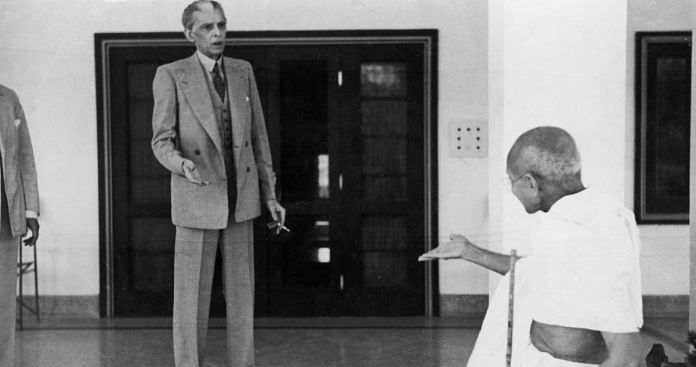The portraits and plaques of Muhammad Ali Jinnah in Indian institutions have irked many individuals and political parties since Partition.
New Delhi: The Aligarh Muslim University is witnessing a major row over the removal of a decades-old portrait of Muhammad Ali Jinnah, the founding father of Pakistan, from the university’s students’ union hall.
Activists of the Hindu Yuva Vahini attacked the campus Wednesday, two days after Satish Gautam, the BJP MP from Aligarh, wrote to the vice-chancellor, objecting to Jinnah’s portrait hanging in the hall.
AMU spokesperson Shafey Kidwai had defended the portrait, explaining that Jinnah was one of the founders of the University Court, and was granted life membership of the student union, making his portrait eligible to be put up. But the portrait has now been taken down from the hall, and hundreds of students are protesting this.
However, the AMU isn’t the first institution to commemorate Jinnah’s contribution to India’s history, and nor is it the first slice of his personal history to face a threat in modern India.
Bombay High Court
Jinnah’s barrister certificate, issued in 1896, is immortalised in a plaque at the Bombay High Court museum, which was inaugurated by Prime Minister Narendra Modi himself on 14 February 2015. Jinnah’s certificate has been placed alongside Mahatma Gandhi’s, given their contributions to the history of the court. Jinnah had defended freedom fighter Bal Gangadhar Tilak twice in this court, including the milestone sedition case of 1916 where Jinnah’s arguments were so forceful that the judges were swept in Tilak’s favour.
Jinnah’s People’s Memorial Hall
A plaque in Jinnah’s honour was once found inside the compound of the Indian National Congress building near Lamington Road in Mumbai, at a special hall called Jinnah’s People’s Memorial Hall. The hall was built in 1918 to commemorate the mass demonstration that Jinnah and his wife, Rattanbai or ‘Ruttie’, led against the colonial governor of Bombay, Lord Wellington.
The protesters had to face police force during the movement, where Jinnah emerged as the hero for the people of the then-Bombay. Within a short time, his admirers and Congress party members contributed money and collected a sum of Rs 30,000, with which they constructed the Jinnah hall.
The hall was a hub of political activity in the 1980s, where the likes of Indira Gandhi and Morarji Desai held gatherings. However, this plaque was forcibly removed by Shiv Sena members a few years ago.
Jinnah House
Shiv Sena and BJP workers have also made attempts to have the famous Jinnah House in Mumbai demolished. The sprawling, sea-front home where Jinnah lived until Partition, has been lying vacant for three decades, with the Pakistan government keen to take possession of its founder’s house.
Dina Wadia, the only child of Jinnah and Rattanbai, had filed a petition in the Bombay High Court to take control of the property and spend her last few days in her childhood home. Wadia died in November 2017.
Before and after that, the BJP has been trying to revive it as a cultural centre, war memorial or museum.



